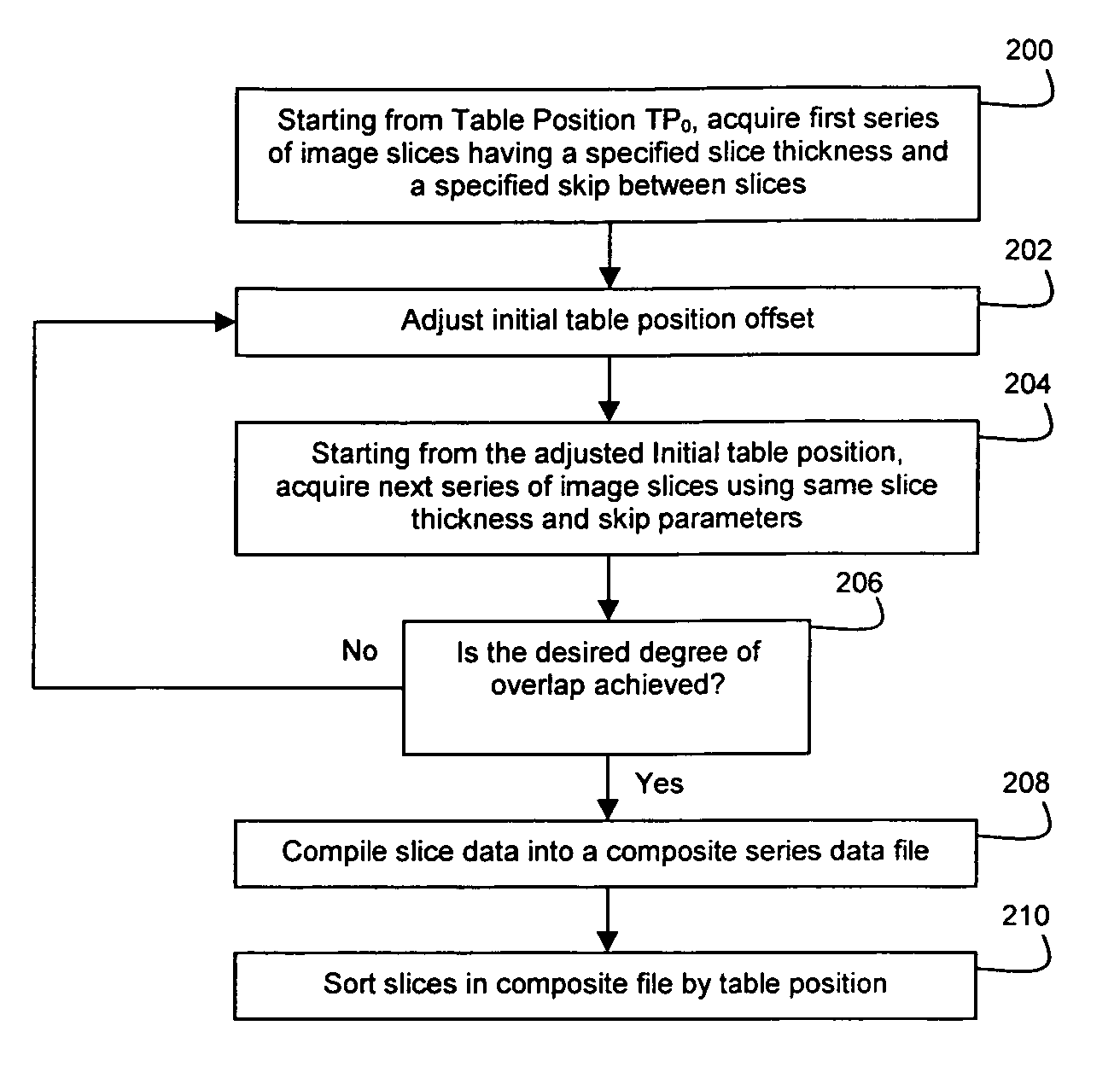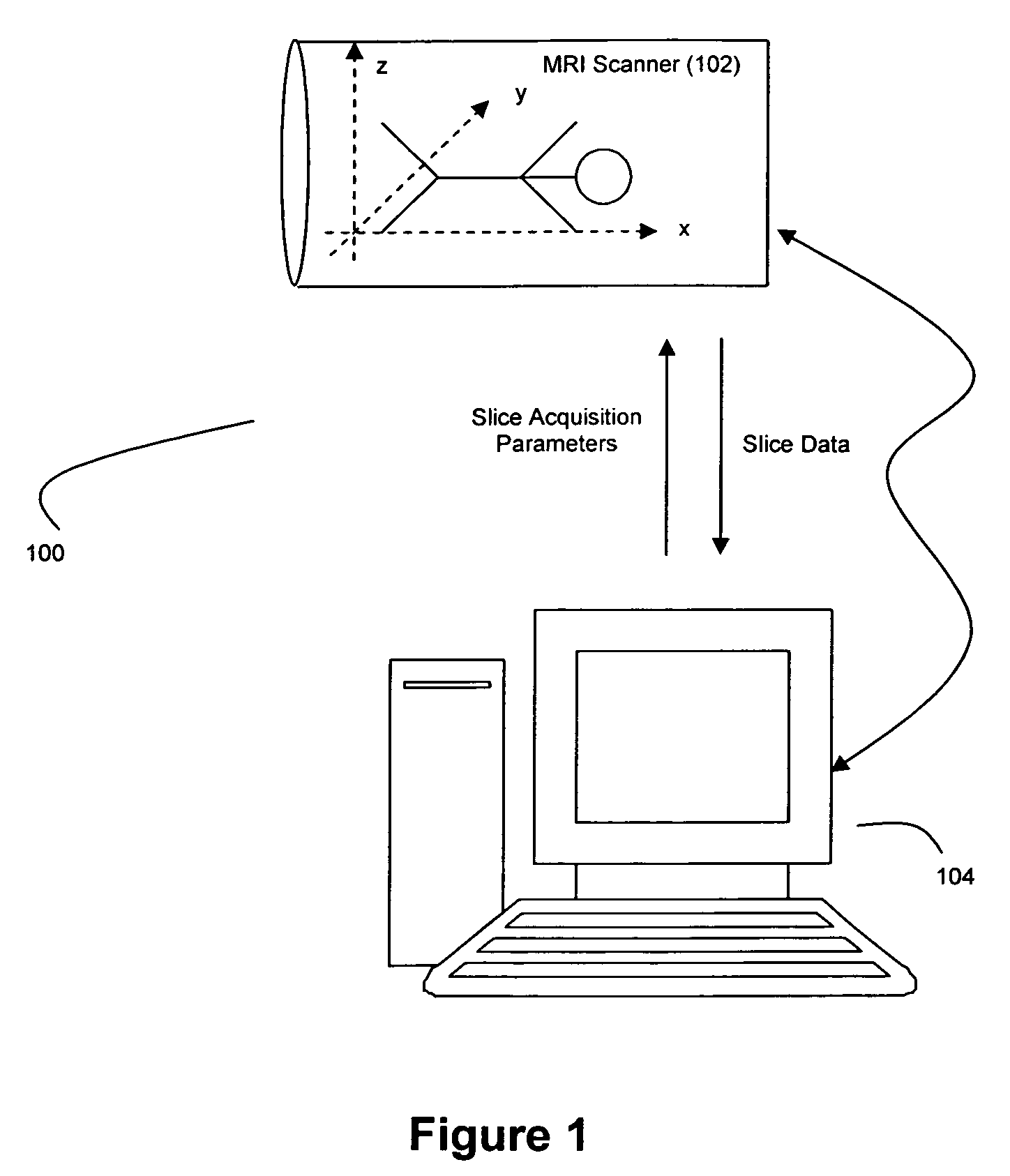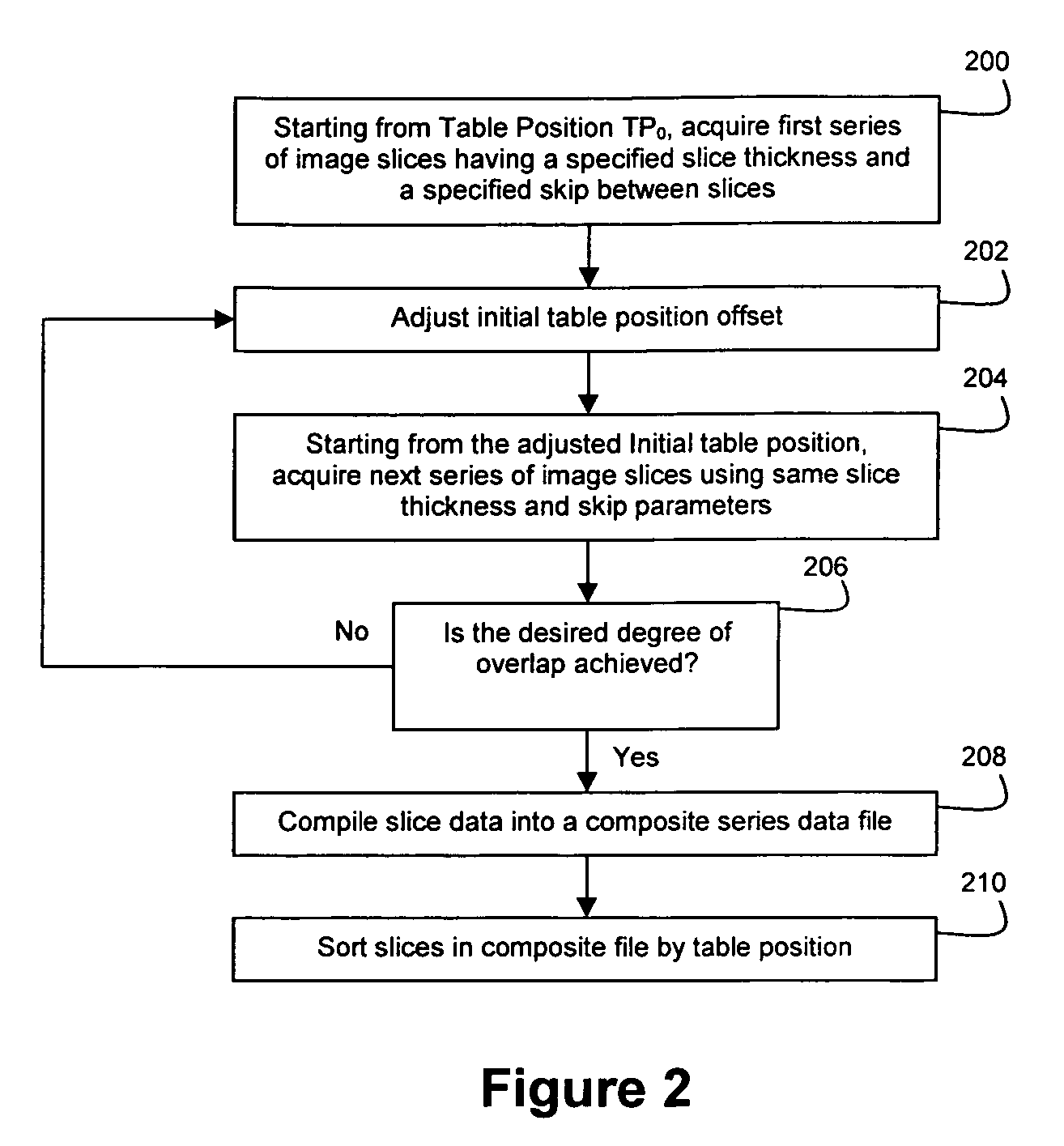Method and apparatus for acquiring overlapped medical image slices
a medical image and overlap technology, applied in the field of medical imaging, can solve the problems of limited value of current mr imaging techniques for acquiring medical image slices of a patient's region of interest (roi), reduce the ability to easily change parameters before and after image acquisition, and reduce the signal to noise (snr), etc., to achieve excellent snr, enhance image detail, and excellent mprs
- Summary
- Abstract
- Description
- Claims
- Application Information
AI Technical Summary
Benefits of technology
Problems solved by technology
Method used
Image
Examples
Embodiment Construction
[0023]FIG. 1 illustrates a preferred image data acquisition system 100 in accordance with the teachings of the present invention. An MR scanner 102 is used to acquire 2D image data corresponding to a patient's ROI along selected ones of the xy (coronal), xz (sagittal), and yz (axial) planes. If desired, 2D image data can also be obtained in planes of other specified obliquities. The scanner 102 acquires 2D image slices in accordance with instructions provided by a clinician via a scanner interface control computer 104. Through control computer 104, a clinician can specify the necessary slice parameters for a given acquisition, as is readily understood in the art. The resultant image data acquired by the scanner 102 are then returned to control computer 104 for further processing thereby. A preferred system 100 suitable for use with the present invention is a 1.5 Tesla Siemens Sonata Magnetom System manufactured by Siemens Medical Systems of Erlangen, Germany. It should be understood...
PUM
 Login to View More
Login to View More Abstract
Description
Claims
Application Information
 Login to View More
Login to View More - R&D
- Intellectual Property
- Life Sciences
- Materials
- Tech Scout
- Unparalleled Data Quality
- Higher Quality Content
- 60% Fewer Hallucinations
Browse by: Latest US Patents, China's latest patents, Technical Efficacy Thesaurus, Application Domain, Technology Topic, Popular Technical Reports.
© 2025 PatSnap. All rights reserved.Legal|Privacy policy|Modern Slavery Act Transparency Statement|Sitemap|About US| Contact US: help@patsnap.com



